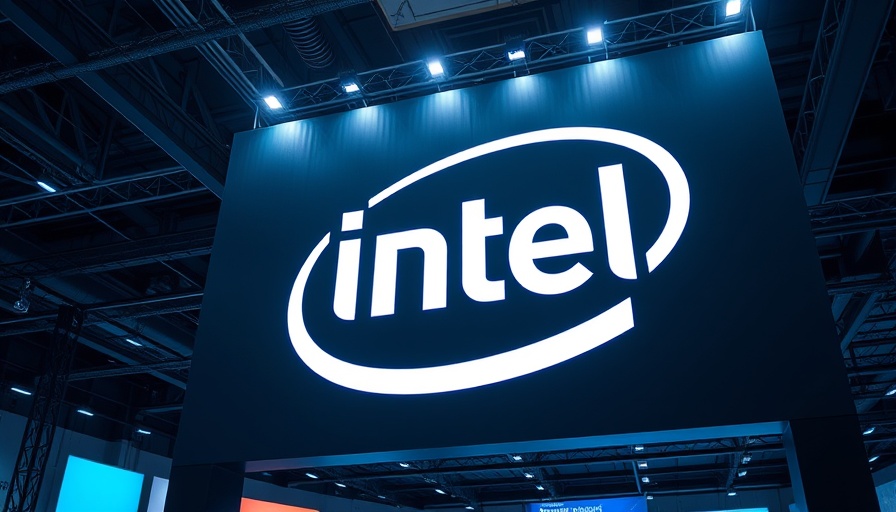
Intel Undergoing a Major Transformation with New Leadership
As Lip-Bu Tan takes the helm as Intel's new CEO, the company is gearing up for significant strategic changes aimed at revitalizing its operations. Prior to his appointment, Intel had struggled to maintain its standing in the competitive semiconductor landscape, losing billions and failing to keep up with demands in emerging sectors like artificial intelligence (AI). Tan's return reintroduces a forceful approach aimed at streamlining management and enhancing manufacturing capabilities.
The Challenge Ahead: Restructuring and Revamping Operations
Upon his announcement as CEO, Tan indicated to Intel employees that he would be making "tough decisions" that are essential for the company’s recovery. Reports suggest that central to this transformative agenda is a significant overhaul of middle management, designed to enhance decision-making speed and operational efficiency.
Intel has historically operated under a layered management structure, which has been criticized for being overly bureaucratic. Tan's strategy includes reducing management layers that hinder innovation and agility. This kind of restructuring is vital for Intel, which has seen its market position slip in the face of growing competition from well-established firms like NVIDIA and emerging AI-centric companies.
Focus on AI and Manufacturing Innovations
Tan is set to prioritize advancements in AI technology and chip manufacturing processes. The semiconductor industry is rapidly evolving, and AI chips are becoming fundamental to data centers and cloud computing. Unlike his predecessor, Tan aims to not just make chips for Intel itself but also broaden the company’s involvement in external manufacturing contracts.
For instance, a major push will be to attract clients like Microsoft and Amazon to utilize Intel's manufacturing services. By adopting a more customer-focused approach, the aim is to rejuvenate the Foundry segment, which has suffered from underperformance. With this shift, Intel could potentially secure lucrative contracts that would stabilize and grow its revenue streams.
Addressing Previous Leadership Shortcomings
The decision-making challenges under former CEO Pat Gelsinger, who had a tendency to avoid drastic personnel changes, are perceived as a major factor in Intel’s declining competitiveness. Tan, meanwhile, had previously expressed criticism about the cultural inertia that had set in, suggesting the need for a return to a more aggressive management philosophy reminiscent of Intel's early days.
From Gelsinger's more amicable management style, Tan's leadership is expected to introduce a more results-oriented paradigm. The semiconductor expert has substantial experience from his time as the CEO of Cadence Design Systems, where he led transformative initiatives in efficiency and production.
Future Predictions for Intel
The future of Intel under Tan's leadership will hinge on several ambitious initiatives. Industry analysts suggest that aims such as delivering new AI chips annually could reinvigorate the company's image and financial performance. This will require Intel to invest heavily in R&D while ensuring its manufacturing processes are capable of meeting these high-stake demands.
However, the road ahead will not be without challenges. The semiconductor market is incredibly dynamic, and Intel must keep pace with rapid developments in technology and manufacturing techniques. Competitors like TSMC have set high standards in efficiency and customer service that Intel must aspire to meet.
Strategizing for Customer Engagement and Ecosystem Expansion
Enhancing customer relationships will be a key focus area for Tan. By engaging more with clients and listening to their needs, Intel could realign its product development strategies to better serve the market. This customer-centric approach is essential for establishing trust and securing long-term partnerships, particularly in the highly competitive AI chip landscape.
As the semiconductor sector continues to evolve, companies that adapt quickly to market needs will thrive. Tan's visionary approach will aim to redefine Intel's role not just as a chip manufacturer but as a pivotal player in the AI and technology ecosystem.
Conclusion: A Call to Watch Intel's Journey
With Lip-Bu Tan at the helm, Intel is poised to undergo a significant transformation that will undoubtedly impact its operations and market strategy. Those invested or interested in technology's future should keep a close watch on how Tan's leadership unfolds.
 Add Row
Add Row  Add
Add 



Write A Comment